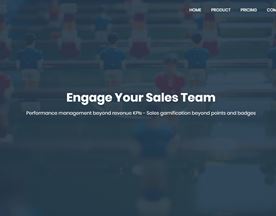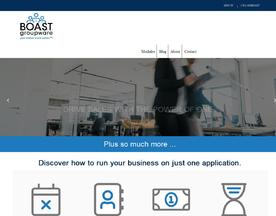Sandler Sales Methodology: a transformative framework that has been reshaping the landscape of sales. Unlike traditional sales models, which often emphasize closing the deal above all else, Sandler Sales turns the tables by focusing on an honest, no-pressure exchange. It’s not just about selling; it’s about creating a dialogue where the prospect’s needs are just as important as the sale itself.
At the heart of the Sandler Sales Methodology is the conviction that the buyer and seller should be equally committed to the sales process. This commitment to a balanced power dynamic sets it apart from the high-pressure tactics that many associate with sales. Sandler’s approach is a breath of fresh air for those who are wary of aggressive salespeople and too-good-to-be-true pitches.
So, how did this revolutionary approach for sales reps come about? Developed by David Sandler in 1967, it began as a reaction to the one-sided nature of most sales transactions. Sandler saw the need for a system that benefits both parties, encouraging salespeople to act more like trusted advisors than mere vendors. This led to the creation of a sales training program that focuses on long-term customer relationships and sustainable sales success.
Sandler Sales Methodology fosters a trusted, consultative approach to selling, focusing on client relationships for mutual success.

The Sandler Sales Methodology or sandler method, isn’t just a set of techniques; it’s a philosophy. It’s about understanding and implementing a system of honest communication and respect for the prospect’s decision-making process. The methodology is built upon a foundation of psychological principles that help salespeople navigate complex sales landscapes with confidence and integrity.
The principles of Sandler Sales rely heavily on behavioral psychology, focusing on how people think and act during the buying process. Salespeople trained in the Sandler sales system’s methods are skilled at identifying the prospect’s core needs, often referred to as “pains,” and addressing them in a way that builds trust and rapport. By avoiding high-pressure tactics, they instead foster a collaborative atmosphere where the prospect is comfortable discussing their issues openly.
Why does this matter to you? In the modern market, buyers are more informed and have higher expectations than ever before. They can sense when they’re being sold to and often retreat from the traditional approaches that feel disingenuous. The Sandler Methodology embraces this informed buyer, working with their knowledge rather than against it, to create a more productive and respectful buying experience.
Whether you’re new to sales or looking to refine your approach, the Sandler Sales Methodology offers a robust framework that can lead to more meaningful conversations, more satisfied customers, and ultimately, more successful sales outcomes. By the end of this post, you’ll not only understand the philosophy and tactics behind the Sandler Sales method but also how to apply them to enhance your sales process effectively.

Understanding the Sandler Sales Methodology
The Sandler Sales Methodology is a sophisticated, multi-layered approach to selling that requires a deep understanding of its core components. It’s grounded in the principle that effective sales are the result of a strong client relationship built on trust and mutual respect. Let’s unpack the key elements that form the backbone of this powerful, sales method and strategy.
The Sandler Sales Pain Funnel
At the center of Sandler’s philosophy is the Pain Funnel, a concept that aims to uncover the prospect’s true problems—their “pain points.” The Pain Funnel is a sequence of open-ended questions designed to lead the prospect in revealing deeper and more specific issues related to their situation. The idea is to move the prospect’s pain points beyond surface-level symptoms and reach the underlying challenges that the prospect may not have even been aware of.
The Sandler Selling System Rules
The methodology is governed by a set of ground rules that dictate the engagement between buyer and seller. These rules serve as guidelines for salespeople to manage conversations and steer clear of traditional selling pitfalls. Some of these rules include not fearing to lose the sale, breaking the traditional buyer-seller dynamic, and ensuring that both parties are equally invested in the outcome.
The Importance of a Mutual Comfort Zone
The Sandler Sales Methodology places great importance on establishing a Mutual Comfort Zone, a space where both the buyer and the seller feel comfortable to communicate openly and honestly. This concept is critical to the success of Sandler’s non-traditional approach, as it shifts the focus from making a quick sale to developing a long-term client relationship. By maintaining a Mutual Comfort Zone, salespeople can foster an environment of mutual trust, that often leads to more sales and referrals.
Understanding these principles is crucial for anyone looking to implement the Sandler Sales Methodology effectively. It’s a system that asks both the salesperson and the client to engage in a meaningful way, paving the path for a more authentic and successful sales process.
Summary Bullet Points:
- The Sandler Sales Pain Funnel is a tool for identifying the prospect’s underlying issues, beyond the immediate pain points.
- Sandler’s Selling System Rules guide salespeople away from traditional selling errors and towards a consultative, respectful approach.
- Establishing a Mutual Comfort Zone is essential for open communication and long-term relationship building.
- The Sandler Sales Methodology is a comprehensive system that emphasizes understanding and addressing the true needs of the prospect.

Implementing Sandler’s Strategies
To effectively put the Sandler Sales Methodology into action, one must embrace and implement its foundational strategies. These strategies are not just techniques but a new way of thinking about and conducting sales conversations. Below we dive into the strategic approaches that are core to the Sandler sales system itself.
Setting Up the Up-Front Contract
One of the unique aspects of the Sandler Sales Methodology is the use of the Up-Front Contract. This is an agreement established at the beginning of any sales interaction that outlines what will take place during the conversation, the time allocated for it, the purpose of the meeting, and the potential outcomes. This contract sets clear expectations for both parties and helps prevent misunderstandings. It’s about getting both sides to agree on what a successful outcome of the meeting would look like, whether it’s a sale, a follow-up meeting, or simply more information.
The Sandler Submarine: A Step-by-Step Guide
The Sandler Submarine is a metaphor for the Sandler selling process, which is broken down into seven distinct stages:
- Bonding and Rapport
- Up-Front Contracts
- Pain
- Budget
- Decision
- Fulfillment
- Post-Sell
Each compartment requires a series of steps to navigate through effectively, ensuring that by the time you reach “fulfillment,” both parties are fully committed to the solution. Like a submarine diving deep, the methodology advocates for a deeper understanding of the client’s issues before resurfacing with a solution.
Bonding and Building Rapport
Central to the Sandler Sales Methodology is the ability to build rapport with clients. This involves more than small talk; it’s about establishing a genuine connection that transcends business transactions. Bonding with clients involves active listening, empathy, and the ability to connect on common ground. It’s about making the client feel heard, understood, and respected.
These strategic approaches are the engines of the Sandler Sales Methodology. By integrating these strategies into your sales process, you can not only improve your sales outcomes but also the quality and satisfaction of your client relationships.
Summary Bullet Points:
- The Up-Front Contract sets clear, mutually agreed-upon expectations at the beginning of the sales interaction.
- The Sandler Submarine provides a structured, sequential approach to the sales process, ensuring thorough understanding and agreement at each step.
- Bonding and building rapport are critical for establishing trust and a meaningful connection with clients, laying the groundwork for successful sales conversations.
- Implementing Sandler’s strategies requires adopting a consultative mindset that prioritizes the client’s needs and a mutual understanding of the sales journey.

Software Tools to Enhance the Sandler Sales Methodology
Integrating the Sandler Sales Methodology into your sales process can be greatly facilitated with the right software tools. Below is a list of types of tools, along with specific examples and their URLs, to help you implement this methodology effectively.
CRM Systems
Salesforce – This robust platform can be customized to suit the Sandler Sales Methodology, enabling you to make sales calls, track all customer interactions and manage your sales pipeline efficiently.
HubSpot CRM – HubSpot CRM is renowned for its ease of use and ability to scale with your business, making it ideal for managing customer relationships according to the Sandler Sales Methodology.
Zoho CRM – Zoho CRM’s suite of tools is designed for businesses seeking a CRM that can be tailored to the Sandler methodology’s nuanced processes.
Sales Pipeline Management
Pipedrive – Pipedrive provides a user-friendly platform to visualize your sales pipeline, which is essential for the systematic approach of the Sandler Sales Methodology.
Trello – While not exclusively a sales tool, Trello’s customizable boards can be set up to reflect the stages of the Sandler sales cycle and pipeline, helping your team stay organized and focused.
Analytics and Reporting
Tableau – With Tableau’s advanced analytics capabilities, you can measure and analyze your sales efforts, gaining insights that are essential for the continuous improvement aspect of the Sandler methodology.
Google Analytics – A free tool that can track website performance and customer behavior, providing valuable data that can be correlated with sales metrics.
Communication and Collaboration Tools
Slack – Slack facilitates quick and efficient communication among team members, an essential component of the collaborative nature of the Sandler Sales Methodology.
Microsoft Teams – Microsoft Teams provides a comprehensive platform for video conferencing, document sharing, and messaging to support a collaborative sales process.
Learning and Development Platforms
LinkedIn Learning – Offers a wide array of courses, some of which align with the Sandler Sales Methodology, providing ongoing learning for your sales team.
Udemy for Business – With a range of sales-focused courses, you can support your team’s development with content relevant to the Sandler Sales Methodology.
Incorporating these tools into your sales process can help ensure that the Sandler Sales Methodology is not just a concept but a living, breathing part of your sales strategy. Each tool offers unique features that can augment different facets of implement the sandler selling methodology, from customer engagement to data analysis and team collaboration.

Frequently Asked Questions
What is the Sandler Sales Methodology?
The Sandler Sales Methodology is a sales approach developed by David Sandler in 1967. It’s a conversational framework that prioritizes building a mutually beneficial relationship between the buyer and seller, focusing on long-term customer satisfaction and repeat business.
How does the Sandler Sales Methodology differ from traditional sales methods?
Sandler’s approach is distinct in that it avoids high-pressure sales tactics, instead encouraging an open and honest communication, consultative interaction. It’s about understanding the client’s needs and creating a solution together, rather than pushing a product or service.
Can the Sandler Sales Methodology be used in any industry?
Yes, the principles of the Sandler Sales Methodology are versatile and can be adapted to virtually any industry where sales are involved. Its focus on customer relationships makes it a valuable approach in both B2B and B2C contexts.
Is the Sandler Sales Methodology suitable for both experienced sales professionals and beginners?
Absolutely, the methodology offers a structured approach that can benefit salespeople at any level of experience by providing a clear framework for engaging with clients.
What is an Up-Front Contract in the Sandler Sales Methodology?
An Up-Front Contract is an agreement set at the beginning of a sales interaction that outlines the expectations, agenda, and outcomes for a full sales call or meeting, ensuring both parties are on the same page.
How important is rapport in the Sandler Sales Methodology?
Rapport is crucial in Sandler’s methodology. It involves more than just making conversation; it’s about creating a genuine connection and understanding with the client, which is foundational for trust.
What are some common challenges when implementing the Sandler Sales Methodology?
Common challenges include shifting away from a traditional sales mindset, becoming adept at identifying and discussing a client’s “pain,” and mastering the art of letting the client lead the conversation.
How can a company train its sales team in the Sandler Sales Methodology?
Companies can train their sales teams through official Sandler training programs, hiring certified Sandler trainers, or utilizing Sandler’s books, online resources, and simulation tools for in-house sales rep training.
Can CRM software be integrated with the Sandler Sales Methodology?
Yes, many CRM systems can be tailored to the Sandler Sales Methodology to track customer interactions, manage the sandler sales model and pipeline, and implement Sandler strategies more effectively.
What is the Sandler Submarine, and how is it used?
The Sandler Submarine is a metaphor for the Sandler sales process, which includes seven stages: bonding and rapport, Up-Front Contract, pain identification, budget, decision, qualification process, fulfillment, and post-sell. It guides salespeople through the process of a sale from the first contact to closing and follow-up.

Conclusion: Embracing a Client-Centric Approach with Sandler
Adopting the Sandler Sales Methodology isn’t just about changing your sales tactics; it’s about embracing a philosophy that puts the client relationship at the heart of every interaction. Sandler’s strategies go beyond the mechanics of selling to encourage a partnership between the buyer and the seller. This approach has stood the test of time, demonstrating that ethical sales tactics based on mutual respect are not only more enjoyable but also more effective.
Here’s a recap of what we’ve covered:
- Introduction to Sandler’s Sales Methodology: We began with a detailed exploration of the Sandler Sales Methodology, understanding its focus on building long-lasting client relationships and its departure from the high-pressure sales tactics of old.
- Understanding the Sandler Sales Methodology: Next, we delved into the critical elements of the methodology, including the Pain Funnel, the Sandler Selling System rules, and the emphasis on a Mutual Comfort Zone.
- Implementing Sandler’s Strategies: We discussed the tactical implementation of Sandler’s strategies, with an emphasis on the Up-Front Contract and the Sandler Submarine.
- Software Tools to Enhance the Sandler Methodology: We also examined software tools that can help integrate the Sandler methodology into your daily practice, ensuring a smooth transition and effective application.
- FAQ Section: Lastly, we addressed some common questions, providing succinct answers that align with the Sandler philosophy.
Final Thoughts
The Sandler Sales Methodology isn’t a quick-fix solution but a transformational approach to selling. It requires dedication to mastering the techniques and a commitment to evolving with your clients. Sales professionals who adopt this methodology often find that their relationships with clients improve, their stress levels decrease, and their sales numbers increase. Most importantly, they enjoy their work more, knowing that they are providing genuine value to their clients.
Takeaways for Your Sales Journey:
- The Sandler Sales Methodology emphasizes respect, honesty, and a mutual journey to finding solutions.
- Building real relationships rather than making one-off sales leads to greater long-term success and customer loyalty.
- Tools and training are available to support the adoption and refinement of the Sandler methodology.
- Regular practice, reflection, and a willingness to learn from each interaction are key to mastery.















